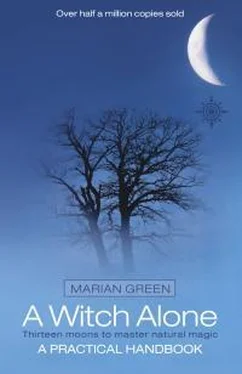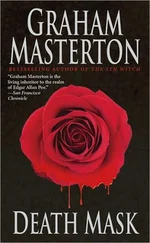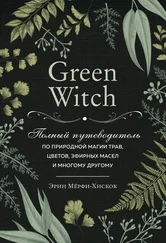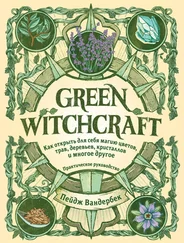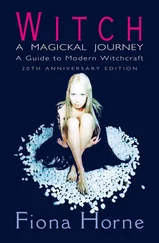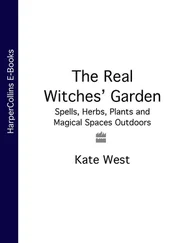Some trees found in Britain will ooze resins if they have been cut and you can chip off small pieces, often mixed with tree bark from pine, larch and other conifers. Apple wood may be resinous but dried and burned it smells sweet, and cherry and plum trees give out gum too. Most culinary herbs will burn, but if you use the dried stems rather than the leaves you will get better results. Any good herbal book will tell you which plants can be used either for relaxation or to awaken your inner psychic powers. Most of the traditional temple incenses contained a mixture of sweet and aromatic gums and resins which had a consciousness-raising effect.
Nowadays people perfume their homes by using oil burners or vaporisers with scented oils, but some of these are made from artificial essences and so may not have the same effects as the pure rose or jasmine flowers, for example. Try to find out what the sources of such aromatics are because the fake ones will do no good to your psychic powers, and may have unpleasant side-effects. The price is a good indicator, for even common ones like rose can cost a great deal for the pure essence. You can make lavender or pine oil yourself, quite easily, by getting some light vegetable oil, sunflower or almond, and putting dried lavender heads or resinous chips of pine wood into them.
If you happen to be near a wooden boat yard when they are repairing a vessel with larch or pitchpine you may be able to collect some wonderful smelly shavings. The balsam poplar has a superb scent in about late April or early May when its small sticky buds are breaking open. To me, this is one of the most glorious scents in nature. The brown, sticky bud covers can be collected and stored in a dry jar for use in incense or pot-pourri.
Many herbs are most commonly used to flavour food, and again there are plenty of excellent books on the subject. You can grow a vast range of edible plants in Britain today, but many of these used to be picked in the wild, in the good old unpolluted days of the horse and cart!
Flowers were added to many dishes and salads, partly for decoration, and because they are known to contain valuable minerals and vitamins. If you do happen to find nasturtiums or rose petals on your plate, do eat them, they taste nice and are good for you. Learn a bit about making garlands out of twining plants, with bright seasonal flowers woven in to decorate your altar staff, if you go in for using the older method of making a place sacred.
You can wear a chaplet of flowers around your head, or a necklace of leaves and brightly coloured seed heads, to celebrate the full moon or the harvest feast. Learn to set up a bowl of special flowers or growing plants as each season changes, or to mark the moons or your own personal anniversaries, men as well as women, for this was one of the priestly tasks of the Ancient Mysteries. If you are unable to set aside a room for magic and have no garden, then a tiny indoor shrine, with sea shells, plants, dried branches or even a mini herb garden will be accepted by the Goddess of Earth as a suitable offering.
If you happen to be artistic and wish to add some of the old crafts to your repertoire, another ancient magic was that of dyeing, using natural plant colours and various chemical mordants to fix the colours. Material made from natural fibres can be dyed in that way, unless you also wish to learn to spin wool and dye that. A wide range of soft countryside colours can be produced from old plants, like blue from woad or greeny-yellow from goldenrod.
Again, many weeds have a use in dyeing, producing muted reds, greens, yellows, russets, browns and blues. You seldom get the bright artificial colours made from chemical dyes but there is a charm and naturalness found in those faded-looking hues which Nature herself provides. You might simply be able to find plant-dyed material to make a robe, or wool to knit a magical scarf or stole from, especially if you visit craft fairs.
Another application which is a bit less time-and space-consuming is the use of flowers, pressed and dried, to make talismans. It is a very old tradition, using the language of flowers, some for love, some meaning friendship, some showing distrust or longing, set out on a card in a pattern which turns the picture into a charm. Again, you will find excellent books on the meanings of various flowers, and how they may be preserved so that their colours and petals look lifelike.
In the old days much simpler charms were made by threading certain leaves or flowers onto a twig to spell out a message, which could be hidden up a tree, or placed on your beloved’s doorstep at midnight, depending on what outcome was desired. Fruit, nuts and flowers were all used to send
messages, not always directly to the recipient, but magically to draw their attention to what was needed.
Some mixtures would indicate a healing charm, some a spell to ward off undesired attentions or bad luck. Remember, even today we still touch wood to draw the attention of Pan, the woodland God, to our hope for success! Or we simply ‘knock on wood’ for luck, asking that the powers of Nature take care of us.
As you will have seen in the previous chapter, different woods could spell out messages from the future, as a very old form of divination. In the same way, dried leaves of those trees could be carefully stuck to cards and covered with transparent film, to make a kind of tree Tarot. Rubbings of the bark or thin slices of wood could be used as other forms of ‘Rune sticks’.
You will soon find that there is a mass of ancient lore about the uses, meanings and values of trees, their associations with particular gods or events or times of year. Don’t swallow every word on ‘ancient tree calendars’ you may come across as gospel (oaks?)! There is little evidence that such a system existed, but certainly different woods would have been used at specific times of year, when they were most fit for the purpose in hand.
Many of the ordinary herbs and sweet-scented flowers can be easily used to scent your bath water, and are a lot cheaper and more ecologically sound than chemical bath foams. Tie some crushed herbs or flowers in a soft cloth under the tap as the water runs into the bath and this will scent the water.
Lemon balm, lavender, rose petals, mint, thyme or sage are all excellent. Some dried herbs could be steeped in boiling water, and then this liquid strained into the bath.
Herbs used in this way are relaxing and also some have a psychically cleansing property, so that the bath becomes the first stage in any ritual, when you will arise refreshed and ready to begin your working. You can make perfumed oil by pressing as many green herbs or flowers as possible into a jar of almond or sunflower oil, and leaving it for several days. Strain this liquid into a clean dark glass bottle and see if the scent has been transferred. If the scent is weak, put it back into a jar with a new supply of flowers or leaves, and repeat until you have a suitable aroma.
Many herbs have been used as cosmetics, particularly in shampoos, and washes made from rosemary for dark-haired people or chamomile for lighter hair can be used as the first rinsing water, after the shampoo has been washed away. Facial scrubs can be made with crushed oats and honey, and cooling lotions made from lemon balm, marigolds or goosegrass can help with chapped skin or mild sunburn.
Marigold (calendula) made into an ointment is excellent after gardening or when your hands have got rough and dry. Again, you will find some very helpful books on the many applications of herbs and plants in cosmetics, cookery and winemaking in the library, or a decent-sized bookshop.
Trees and plants are attributed to the various planets, and old herbalists would prescribe treatments which assisted the position of the planets in the patient’s horoscope, not just to counteract the symptoms they were suffering from. This may well be the forerunner of the increasingly popular therapy, homoeopathy, where minute doses of often quite poisonous plants and minerals are given to
Читать дальше
Конец ознакомительного отрывка
Купить книгу
